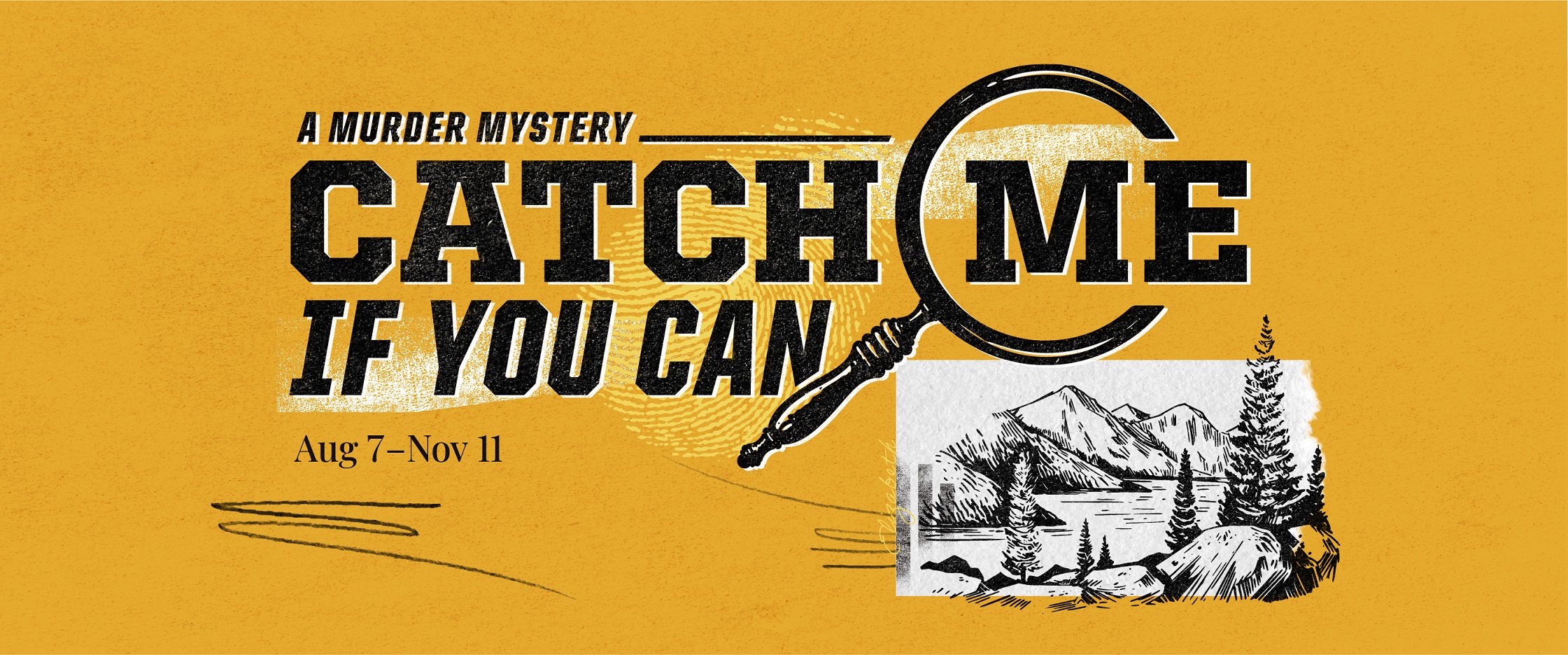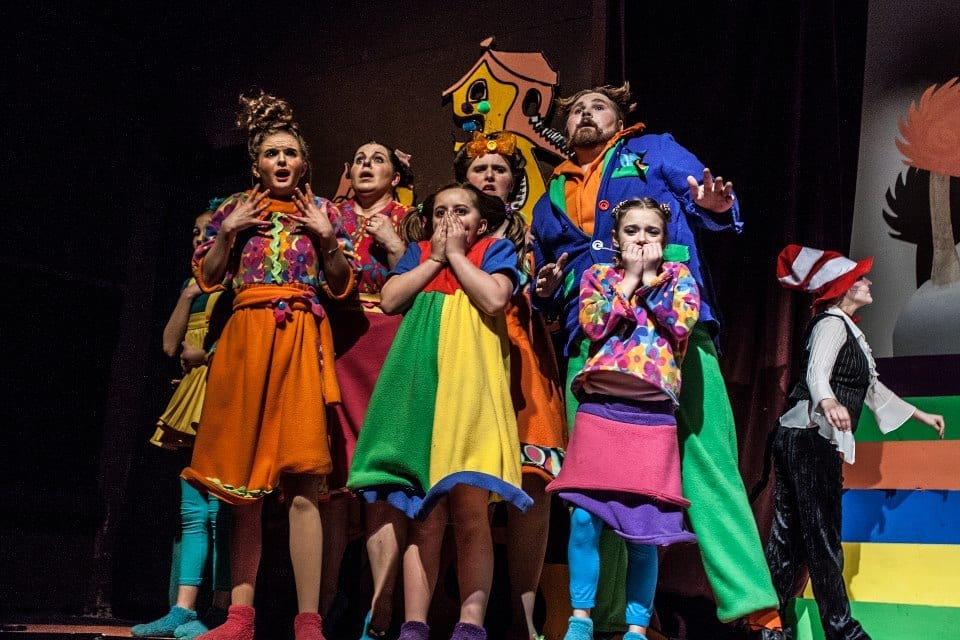SANDY — From the very moment entering the theatre, 1960s pop music sets the time period and mood when, as the lights dim, the music turns forboding. The show is Catch Me If You Can, a comedic mystery thriller by Jack Weinstock and Willie Gilbert based on the French play by Robert Thomas and directed by Barta Heiner. This Catch Me If You Can might come as a surprise to some audience because it is not the musical adaptation of a 2002 film starring Leonardo DiCaprio, but 1965 whodunnit with humor, wit, and an abundance of intrigue. And what a tremendous surprise! The show is an engaging theatrical event with a story that entertains with the humor and thrills promised.

Show closes November 11, 2023.
Daniel Corbyn is a recently married man honeymooning in the Catskills and his wife, Elizabeth Corbyn, is missing. Inspector Levine is the local policeman investigating the disappearance. The priest Father Kelleher then brings to the home a beautiful young woman: the missing Elizabeth! However, Corbyn insists that this woman is not Elizabeth, but an imposter set on driving him insane.
Bradley MacKay as Daniel Corbyn takes on the central personality in the story, featuring in nearly every scene as it plays out on stage. MacKay brings intensity to the performance as the events and characters of this whodunnit play out on the stage. MacKay carries this desperation of discovery that compelled me to engaged with the central mysteries of the plot.
As the foil to MacKay’s insistence to find the missing wife, Chandler Bishop offers humor, wit, and exasperation as the local policeman, Inspector Levine. Bishop’s performance brings levity to contrast MacKay’s performance and thus adds to the humor and wit. Bishop is a major source of the play’s comedic energy amid the mystery.
Meg Flinders delivers a persuasive performance as the young woman Elizabeth Corban, and Flinders’s proclamations ring as equally sincere as MacKay’s protestations that she is an imposter. Between MacKay and Flinders, a humorous and driving conflict is thoroughly developed, as each outwit each other’s protestations. Essentially, tasked with a vital relationship of the mystery, both rise to the occasion before the judge and jury consisting of Levine and the wider audience.
The rich details in the set are perfect for the play’s unfolding mystery. In creating the 1960s luxury mountain cabin in the Catskills, scenic designer Jenn Taylor creates a space featuring a firepit, curved sofa, bookshelves, a functioning interior kitchen nook, and a staircase to an upper level of the cabin. Each element of the space proves functional and necessary to the movement on stage. The fidelity to a 1960s setting could not have been accomplished without the equally important props by properties designer Danna Barney. The attention to detail in filling the set with meaningful, functional props further develops the world of the play. For example, the end tables have lamps, ashtrays, and a yellow vintage rotary phone that is a key item used throughout the story. Many of these props play important roles in the outcomes of scenes and have direct references and their presence speaks to the faithfulness to the script. There is personality to the choice o of props, and the appearance of wealth in the set both that make it enjoyable to discover the stage before the play begins and then as the performers move about the space.
The stage itself features a large projection background of the woodsy setting behind the set that offers dynamics, even changing from nighttime to daytime with video/projection design credited to Josh Shipley. Furthermore, the various sounds of the production by sound designer Kristen Tenney added greatly to the reality of the setting. Notably, while no cars appear, the sounds of the cars driving in, stopping, and the engine turning over create that sensation of present vehicles.
Something to appreciate is that with all the visual details and entertaining performances of the 1960 setting, Heiner takes a great approach to the program director’s note. Acknowledging that audiences may be unfamiliar with all the comedic references in the play, a reference list is provided to better familiarize and peruse. This reference list is an excellent addition to the program and in informing the production of the play.
The best tribute to offer a mystery is that it would be fascinating to watch again knowing the conclusion. With Catch Me If You Can, the intrigue of the story offers much for the viewer to discover in the unfolding plot and performance. In such a show, watching it a second time to see all the little clues and details that lead to the mystery’s finale could be more satisfying than the first viewing. Hale Centre Theatre’s production of Catch Me If You Can gives audiences the thrill of the mystery that is so riveting to watch to its conclusion. It is an intensely engaging production full of excellent details that makes it ideal for repeat viewing.

These reviews are made possible by a grant from the Salt Lake County Zoo, Arts, and Parks program.





